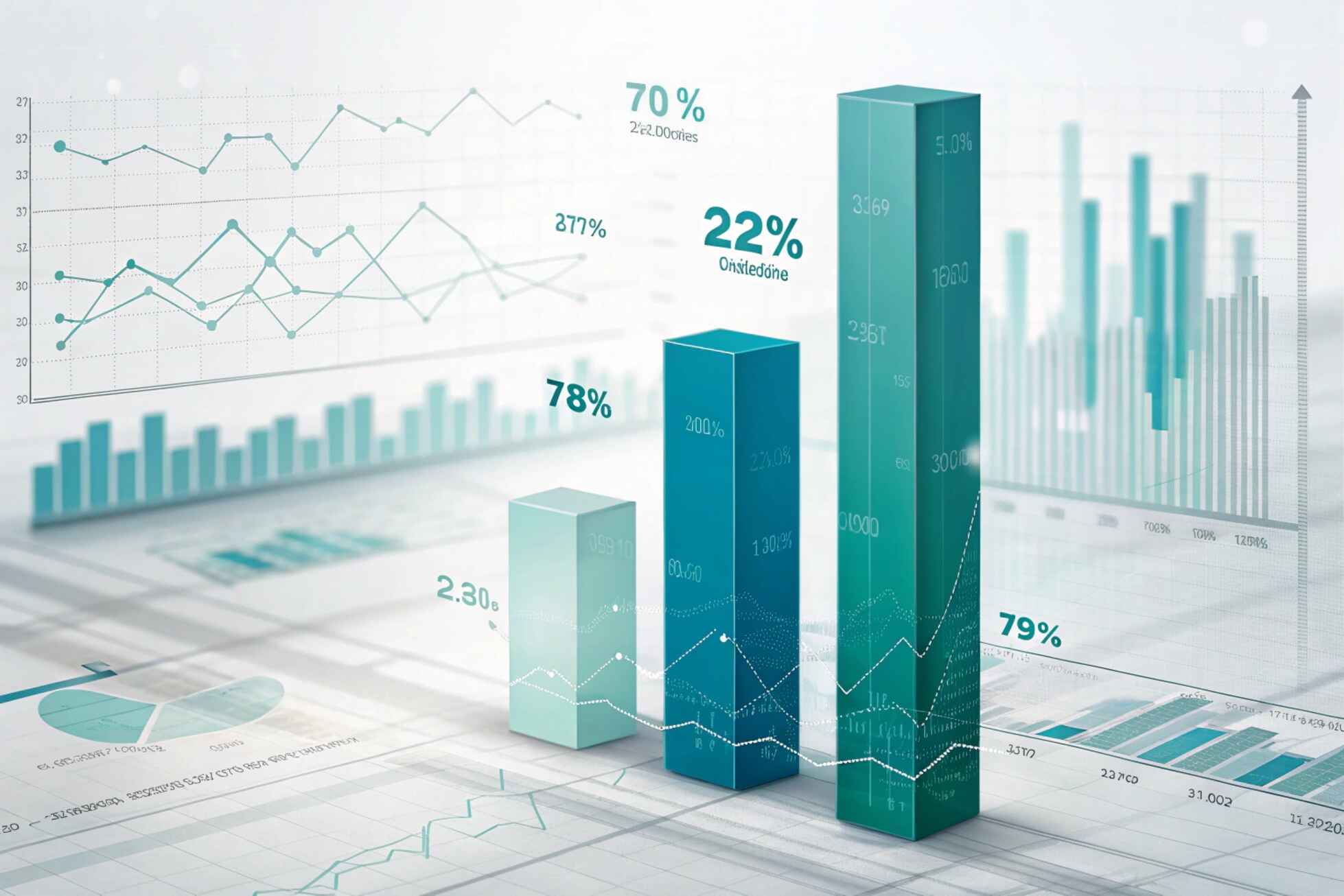Understanding mathematical ratios like 297.2/234 is essential in everyday life, especially when working with data, evaluating performance, or analyzing trends. At its core, this ratio is a division operation—297.2 divided by 234, which gives us approximately 1.27. While it may look like a simple mathematical calculation, it actually tells us much more. It can reflect comparisons, indicate performance margins, guide decisions, or even highlight inefficiencies.
This particular ratio shows that 297.2 is about 1.27 times greater than 234. In real-world terms, this can mean 27% more value, cost, speed, or output compared to a base of 234. Businesses, educators, engineers, and analysts use similar ratios to make better decisions. In this article, we’ll break down everything you need to know about this ratio, from its mathematical structure to its role in practical scenarios.
What Does the Ratio 297.2/234 Represent?
The ratio 297.2/234 is a mathematical way to compare two numbers. In this case, it shows that 297.2 is 1.27 times larger than 234. In decimal form, the result of this division is approximately 1.27, which translates to 127% when converted into a percentage. That means the value 297.2 exceeds 234 by 27%.
But this ratio goes far beyond simple arithmetic. It becomes meaningful when applied to real-world contexts such as:
- Business performance metrics
- Scientific observations
- Academic scores
- Unit price comparisons
- Machine outputs
- Budget analysis
Let’s break this down step-by-step and see how 297.2/234 can be used as a practical tool across fields.
How Is 297.2/234 Calculated in Simple Terms?
To calculate this ratio, we perform a basic division:
297.2÷234=1.2701≈1.27297.2 \div 234 = 1.2701 \approx 1.27297.2÷234=1.2701≈1.27
This tells us that 297.2 is 127% of 234.
For example, if you’re comparing two sales figures—one being $297.20 and the other $234—this ratio shows that the former is 27% higher.
Where Is 297.2/234 Commonly Used in Daily Life?
This ratio can show up in multiple areas of our lives. Some of the most common applications include:
- Price comparisons between two products
- Productivity analysis in a workplace
- Performance evaluations in education or sports
- Budgeting in households or businesses
- Measurement scaling in science and construction
What Does This Ratio Mean in Business and Financial Analysis?
In finance, 297.2/234 could reflect how much you’re spending compared to your expected or budgeted cost.
Marketing Spend Evaluation:
| Description | Amount ($) | Ratio to Budget |
| Actual Spend | 297.20 | 1.27x |
| Planned Budget (Base) | 234.00 | 1.00x |
If a company had planned to spend $234 on marketing but ended up spending $297.2, the ratio helps identify a 27% budget overrun. This data helps managers evaluate efficiency and make necessary adjustments.
How Is 297.2/234 Useful in Engineering and Scientific Measurement?
Precision is critical in science and engineering. Ratios like 297.2/234 can:
- Compare measured vs. expected values
- Monitor system performance
- Help with calibration and scaling
Example: If a sensor should read 234 under normal conditions, but you record 297.2, the ratio indicates the system is performing 27% above expected levels, which could signal an error, enhancement, or anomaly depending on context.
Can This Ratio Be Used in Education and Student Assessment?
Yes, ratios like 297.2/234 help educators:
- Adjust grading curves
- Analyze over-performance
- Identify bonus score effects
Let’s say a student scores 297.2 in a test where the maximum marks are 234 due to extra credit. The ratio becomes a way to quantify and reward overachievement.
How Is 297.2/234 Relevant in Unit Price and Retail Decisions?
Retailers and customers use such ratios to evaluate price-per-unit or value for money.
Calculating Price Per Unit:
| Total Price ($) | Number of Units | Price per Unit ($) |
| 297.20 | 234 | 1.27 |
So, if you pay $297.2 for 234 units, each unit costs $1.27. This helps buyers decide whether they’re getting a good deal compared to other options.
What Happens When We Convert This Ratio to a Percentage?
By converting 1.27 to a percentage, we multiply by 100:
1.27×100=127%1.27 \times 100 = 127\%1.27×100=127%
This means 297.2 is 127% of 234, showing a 27% increase over the baseline. This is especially helpful in performance tracking, such as growth analysis and output comparison.
Can We Simplify the Fraction 297.2/234 Further?
To simplify, remove the decimal:
297.2234=29722340\frac{297.2}{234} = \frac{2972}{2340}234297.2=23402972
Next, reduce using their greatest common divisor (GCD). For most practical uses, however, the decimal (1.27) or percentage (127%) is more useful than the exact fraction, especially in business or education.
How Does the Ratio Compare to Similar Expressions?
Let’s analyze this ratio side by side with others to understand its significance better.
Evaluating Similar Ratios:
| Value A | Value B | Ratio (A/B) | Interpretation |
| 297.2 | 234 | 1.27 | 27% higher than base |
| 260 | 234 | 1.11 | 11% higher |
| 234 | 234 | 1.00 | Equal values |
| 220 | 234 | 0.94 | 6% lower |
This comparison shows that 297.2/234 has the highest gain, which is valuable when assessing performance or return.
How Do You Interpret 297.2/234 in Performance Metrics?
If your target output is 234 units and you deliver 297.2, you are outperforming by 27%. In workplace analytics, this is a strong indicator of high productivity, efficiency, or operational success. Conversely, if 297.2 is your input cost and 234 is your return, then it suggests a negative return, prompting a need to cut down costs.
This ratio helps managers identify whether processes are scalable or if resources are being overutilized. It also plays a vital role in setting realistic performance benchmarks for teams and departments. By continuously tracking such ratios, organizations can spot trends early and make proactive adjustments.
How Does This Ratio Improve Understanding in Presentations and Reports?
Using clear ratios like 1.27 makes complex data more digestible in:
- Team meetings
- Client reports
- Investment pitches
- School assessments
It conveys meaning quickly and eliminates ambiguity. When you say “the cost was 1.27 times higher,” it’s easier to grasp than explaining full dollar values.
Why Should We Care About Ratios Like 297.2/234?
Understanding ratios like 297.2/234 goes far beyond the classroom—it’s a practical tool for real-world decision-making. These ratios offer quick, reliable comparisons that simplify complex data and make it more digestible. Whether you’re managing finances, tracking goals, or comparing performance, such ratios provide clear, actionable insights.
They are especially useful for:
- Evaluating performance in work environments, personal health tracking, or academic progress
- Making smarter spending decisions by showing where resources are being overused or underutilized
- Analyzing outcomes in experiments, where precision and proportionality matter
- Ensuring fair pricing and consumption by identifying whether you’re getting equal value for what you pay
By breaking down large or confusing figures into meaningful comparisons, ratios like 297.2/234 help you make better-informed choices with confidence.
How Is This Ratio Useful in Data Science and Technology?
In the fast-paced world of data science and technology, ratios like 297.2/234 play a vital role in performance analysis and optimization. These numerical comparisons help developers, analysts, and engineers quickly assess how one system, process, or model compares to another. Instead of relying solely on raw data, ratios simplify the decision-making process by showing relative change and impact.
They are especially valuable in areas such as:
- A/B testing performance, to measure which version of a webpage, ad, or feature performs better
- Conversion rate comparisons, where marketers use ratios to determine which campaigns deliver better results
- Server response time analysis, to check how new updates or server configurations affect speed
- Machine learning model efficiency, where metrics like training time, accuracy, or data throughput are compared
For instance, if a new algorithm processes data in 297.2 milliseconds and the previous one took 234 milliseconds, the ratio 297.2/234 ≈ 1.27 reveals that the new version is 27% slower. This insight immediately flags the need for further optimization or resource adjustments.
Such ratios allow teams to identify performance bottlenecks, benchmark improvements, and guide technology upgrades more effectively.
FAQs:
H3: What does the ratio 297.2/234 reveal in everyday decision-making?
This ratio helps quantify how much more or less one value is compared to another. For example, if you’re spending $297.2 on something that typically costs $234, the ratio shows a 27% increase, helping you assess whether that extra cost is justifiable.
H3: How can 297.2/234 be applied in project management?
In project management, this ratio can be used to compare planned vs. actual results. If your project was estimated to take 234 hours but took 297.2, the ratio highlights time overruns and helps in adjusting future estimates or team allocations.
H3: Is 297.2/234 a good or bad ratio?
The value itself isn’t inherently good or bad—it depends on context. A ratio of 1.27 (or 127%) may indicate excellent performance in output, but it might also flag overspending or inefficiency if it reflects costs or time used.
H3: Can 297.2/234 help with performance benchmarking?
Yes. This ratio allows teams or individuals to benchmark progress by comparing current metrics against a set standard. It enables performance tracking over time or against competitors, offering clear insights for improvement.
H3: How do educators or trainers use ratios like 297.2/234?
Educators might use such ratios to measure how far a student or group has exceeded (or fallen short of) academic goals. For example, a student scoring 297.2 when the benchmark was 234 shows a 27% overachievement, which can be factored into grading curves or award criteria.
Conclusion:
In conclusion, the ratio 297.2/234 goes far beyond being a simple math expression—it serves as a practical analytical tool in real-world scenarios. Whether used in finance, education, technology, or performance measurement, it highlights the comparative difference between two values, showing a 27% increase in output, cost, or performance.
Understanding and applying this ratio empowers individuals and organizations to make more informed, data-driven decisions. By converting complex values into meaningful comparisons, 297.2/234 transforms raw data into insight that can drive efficiency, accuracy, and growth across any field.
Related post:









